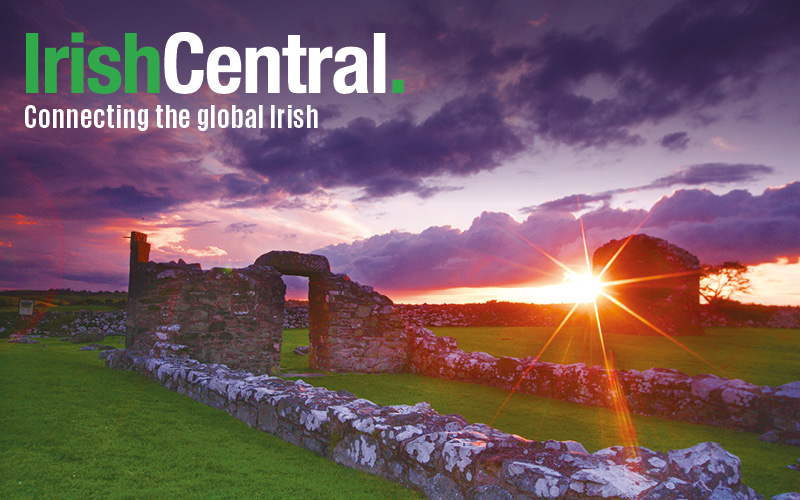A shopper's guide to 19th century Dublin.
Findmypast is working in partnership with IrishCentral to share fascinating insights into your Irish ancestors. Click here to get a special half price subscription, and discover your Irish roots today!
Dublin has always been a city that comes alive at Christmas. These days you can find the likes of Bono and Glen Hansard busking here on Christmas Eve with streets heaving with bag laden shoppers. We tend to think of a 19th Century Christmas as a humbler affair, when families gathered to exchange homemade gifts and sing carols around a candle lit tree in a Dickensian cloud of familial bonhomie. A browse through the Irish newspapers on Findmypast tells another story, one bulging with festive glitter and sweet things to eat.
The Dublin newspapers of the 1850s show a shoppers’ paradise where you could buy perfumes from Paris, furs from Germany or fine Italian leather. As The Advocat, or Irish Industrial Journal put it in 1852, “As we pass the book shops and the toy marts where in large characters are emblazoned the magic words “Christmas Gifts” with the frequent added temptation of, “The Cheapest” we are visited with an insane desire for extensive purchase, that we might enjoy the greatest of all pleasures – that of giving.”
Shopping was not simply a pastime of the aristocracy and landed classes. The advertisements in the Dublin Evening Mail speak to the swelling numbers of the middle classes. Andrews and Co, a department store on 19, 20, 21 and 22 Dame Street, must have been a sight to behold. They proudly declared, in 1853, that they “have now every department fully supplied with all the requisites for Christmas fare.” There were Christmas teas, at 4 shillings a pound, French plums, Valencia, Muscatel and Sultana raisins, crystallised ginger, greengages, pineapples and cherries, fruits in brandy and in syrup, and five different types of ham.
Hodges and Smith booksellers on Grafton Street, advertising in the Dublin Evening Mail in 1854, had handsomely bound illustrated books by Irish authors for the Christmas market. Oliver Goldsmith’s Deserted Village might have been at a more modest 7 shillings and sixpence but their illustrated Moroccan bound edition of Thomas Moore’s Melodies was available for the discerning buyer at £1 11 shillings and six pence. In 1853 a skilled tradesman would earn around 30 shillings a week while a man in the professions, such as law or medicine, would earn considerably more.
J. Kirby’s Rocking Horse Factory and Fancy Bazaar, a few doors away from O’Connell Bridge in the centre of town, proudly announced in the Freeman’s Journal in 1853 that one of their wooden rocking horses had been ordered for Queen Victoria’s nursery. The following Christmas they announced the “largest collection of Dolls in the Kingdom”. Their French and German toys were aimed at every child with prices starting at a penny. If you wanted your Christmas to go with more of a bang it was the place to go to get your fireworks and, of course, “Christmas tree ornaments of the newest designs, comprising Magic Flowers, Bon Bon Boxes, Transparencies, Variegated Lamps, Coloured Bells.”
Switzer, Beatty and Co., who would be famous, under the name of Switzer, for the animated fairytale Christmas windows at their store at 91 Grafton Street right up to the end of the 20th century, were still a woollen clothiers and general drapers in 1857. They tempted the middle classes with their readymade range of beaver wrappers (fur-lined house coats), Verona peletots (semi fitted men’s coats) and Venetian mantles (loose fitting women’s garments to wear over indoor clothes). All in the new season’s styles.
But then as now, in the dark, beyond the bright lights and sweet treats, the poor of the city shivered. In the 1850s the Great Famine was still a recent memory and the idea of charity was never far away. Many of the stores advertising in the Dublin Evening Mail and the Freeman’s Journal offered trade discounts for those buying charitable donations of warm clothes and food. In 1858 the Freeman’s Journal informed it’s reader’s there was a way to marry commercialism with charity, by doing their Christmas shopping at the church run market in the Rotunda at the top of Sackville Street, now O’Connell Street. “To all therefore who respect the time-honoured practise of the season we might say - Buy your Christmas presents at St Joseph’s Bazaar. They will not be less attractive to your children, or less ornamental in your drawing room or less acceptable to your friends, for being sanctified by the sacred charity which they will have served.”
For more stories on tracing your Irish heritage from Findmypast click here.




Comments